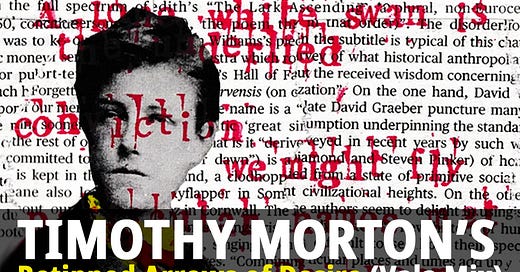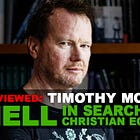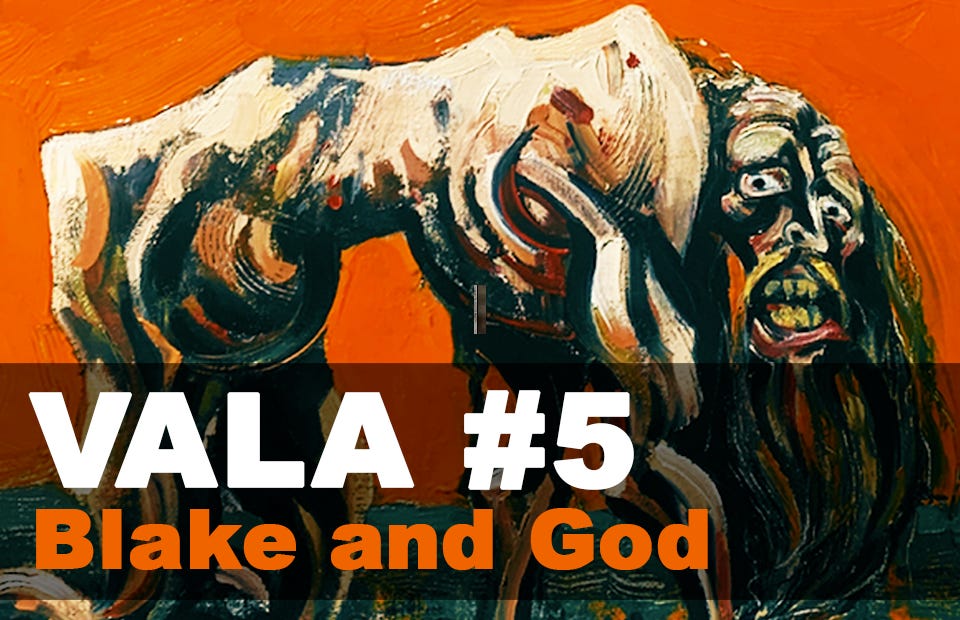Retipped Arrows of Desire (Vala Redux)
My review of Tim Morton's Hell: In Search of a Christian Ecology, from the recently published Vala #5, journal of The Blake Society. You can download Vala #5 here.
Hell: In Search of a Christian Ecology
Timothy Morton
Columbia University Press, 312pp, £20
May 2024
Here is my review of Tim Morton’s Hell from Vala #5, the journal of The Blake Society. NB. Some small cuts in the printed version for reasons of space have been restored.
Find any group of critics or artists, and the shortest break in the conversation will be the one between someone mentioning science, and someone else saying that the problem is its coldly objective attitude. Yet the surest sign of the contemporary grip of scientism is that these critics are just as likely as any scientist to present their ideas as if simply loaned from the realms of logic and reason. They wince at the thought of openly defending a truly personal view since it will invite accusations of harbouring an unscholarly, unruly, unsanctioned partiality.
Timothy Morton will have none of it. Not only is their new book full of wisdom summoned from the depths of a lifetime of experience, both joyful and traumatic, but that experience itself culminates in their having recently been ‘reborn in Christ’ after decades as a practising Buddhist: the central fact around which the book turns. Morton has placed their new faith at the heart of an exhilarating – at times, hair-raising – polemic, aimed at convincing you that only a genuinely spiritual and religious vision can deal meaningfully with contemporary ecological and political traumas: everything else is AI.
Morton says the book is not ‘about’ Blake so much as it was written ‘with’ him as a tribute to The Marriage of Heaven and Hell.1 Cynics will find it convenient that Morton’s new faith doesn’t seem to have much changed the philosophical views they were known for anyway, founded in the Object Oriented Otologists’ (OOO) view of the universe as a sea of objects interacting aesthetically but remaining ultimately ‘withdrawn’ – OOO-speak for saying that objects are never reducible to our (or any other) experience or knowledge of them.2
This concept of an object includes palpable, macro-scale things such as myself, the book in front of me, and the room I’m sitting in, but also includes less evident candidates for object-hood, such as global warming, the concept of a peacock, the Millenium Falcon, capitalism, Greggs sausage rolls and dark matter: all are equally objects. OOO thus brings a radical democracy to our understanding of things, such that being human no longer means you are a special kind of object, automatically in charge – and being white and male certainly doesn’t mean you are top dog. By this reckoning, humans are no longer considered the world’s main attraction or raison d’etre, with obvious implications for how we relate to one another and to a world which is no longer ’our’ world.
The most significant thing about OOO for the text of Hell is that it rejects the traditional philosophical obsession with negotiating subject against object, active vs passive, master vs slave. Morton sees these antitheses as emerging with the creation of agricultural society some twelve thousand years ago, and underlying everything from misogyny, racism and slavery to global warming today. Morton’s rejection of these antitheses underpins the radicalism of their Christianity.
As a reader of Morton, I’ve felt for a while that their philosophy provides much the same subversion of an unreliable ‘common sense’, the same ideological myth-busting, we find in Blake, Marx and the Mumonkan, so it didn’t come as a surprise when I heard they were working on a book about Blake, Christianity and ecology; and I’m not at all surprised that their earlier OOO views resonate so deeply with the type of dissenting Christianity, associated with Blake, which Morton adopts here. OOO’s ontological levelling instinct harmonises beautifully with Blake’s Christian vision: ‘For every thing that lives, is Holy’.3
Not only does Morton reject the tyrannical storm god, Yahweh, in favour of the Prince of Peace, as you might expect, but, borrowing a move from Jeffrey Kripal: ‘We will flip Gnosticism’.4 Gnostics see humans as spirits (good) trapped in a world of dead matter (bad). Morton ‘flips’ this to present a picture of humans instead as beautiful (material) bodies, built of desire, and hungry for beauty (good), but trapped in a world of regressive ideas and institutions (bad). Their apocalypse involves rejecting tyranny and all forms of oppression. They call on the Holy Spirit to descend upon the environmental movement to sweep it beyond its often miserabilist, moralising demeanour.
Morton takes a series of dives into Blake’s work, especially poems from Songs of Innocence and of Experience, offering new perspectives. Their analysis of ‘The Tyger’ is particularly suggestive, demonstrating Blake’s polysemia – his willingness to give up the hierarchical authorial voice to say something beyond it. There is a great deal here to engage both scholarly and enthusiastic students of Blake, as well as anyone else interested in ‘the marriage of religion and the biosphere’ generally. It has been a long time since I read a book with Blake at its heart that was so authentically Blakean in terms of its passionate and indignant righteousness, but what strikes me most is just how well it augurs, and how appropriate it seems, that this work, the most radical invocation of Blake for a generation, should arise in the course of its authors’ deep engagement with the sacred, and their finding God.
I wrote this much longer appreciation of Morton’s book when it was published back in May
Retipped Arrows of Desire: Timothy Morton's Hell: In Search of a Christian Ecology (Review)
Timothy Morton, Hell: In Search of a Christian Ecology, New York: Columbia University Press, ISBN: 9780231214711 (pbk), 9780231214704 (hbk), pub. May 2024.
Preview and download Vala #5 and earlier issues here
Vala #5: Blake and God
Vala is the journal of the Blake Society. Members of the Society are sent a printed copy through the post, but a PDF version is free for anyone to download. If you would like a paper copy, please join the Blake Society.
Timothy Morton, Hell: In Search of a Christian Ecology, New York: Columbia University Press, 2024, p45.
For Morton’s views on hyperobjects, see Timothy Morton, Hyperobjects: Philosophy and Ecology After the End of the World, Minneapolis: University of Minnesota Press, 2013.
William Blake, The Marriage of Heaven and Hell, pl.27, E45; my emphasis.
Morton (2024), p3.















There is a disorienting, fugue-like quality to the book. A single read (all I’ve had time for at the moment) is insufficient to distill its essence as well as your review has! Thank you!